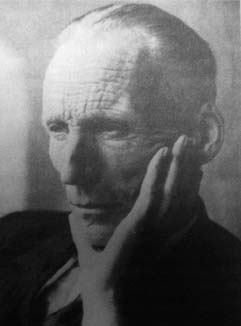
Paradise lost and rescued
In the first part of this article we looked at intuitionist/constructivist mathematics as it was developed by LEJ Brouwer. At the time mathematicians feared that Brouwer's ideas would lead to a complete overhaul of mathematics. Were they right?

Luitzen Egbertus Jan Brouwer, 1881-1966.
At first it seemed that they might be: Brouwer proved results that appeared to fly in the face of standard mathematics. Many of those affected the real numbers and their rather slippery, infinite nature, which Brouwer himself worried about a lot.
Paradise lost?
We tend to take the real numbers for granted, but there are actually several ways of thinking about them, each subtly different from the others: as points along an infinitely long line, in terms of decimal expansions, and as limits of infinite sequences of rational numbers, to name three. Along with many others Brouwer favoured a definition in terms of infinite sequences (you don't need to understand it for the purpose of this article, but you can find out more about the sequence definition here).
At first sight you might think that constructivists should shun infinite sequences: after all, it is humanly impossible to write one down. But constructivists aren't finitists. They are happy to accept infinite sequences as long as there is a finite recipe that tells you how to work out each individual entry of a sequence. Something like "the $nth$ entry of the sequence is $1/n$", or even a sequence constructed from the Goldbach conjecture as in first part of this article, is a permissible constructivist object.
Brouwer was also worried, however, about that other intuition we have about the real numbers: that they should merge together to form a continuous line. This can only happen if, loosely speaking, there are "sufficiently many" real numbers. Brouwer worried that allowing only pre-determined sequences to define real numbers wouldn't provide sufficiently many, so he also allowed what are called choice sequences into the picture. These aren't rigorously pre-determined, but can result from an "ideal mathematician" making the sequence up as they go along, for example by rolling a die infinitely many times.
In classical mathematics the notion of such a sequence would be accepted in its infinite totality, but, being a constructivist, Brouwer insisted that we can only ever assume to know a finite part of it. This balancing act between allowing all kinds of sequences on the one hand, but being constructivist about them on the other, ultimately led to results that appeared to contradict accepted mathematics. If you are familiar with the terminology, one of those results was that any function of the real numbers on a closed interval is continuous, something that most emphatically isn't the case in standard maths.
These results didn't really conflict with accepted maths, but only represented a radically different view point — a function in Brouwer's maths wasn't quite the same as a function in accepted maths, for example. But together with Brouwer's somewhat fuzzy way of explaining himself and his apparent desire to destroy standard maths, they didn't gain intuitionism much favour with mainstream mathematicians.
Paradise rescued
A shake-up of the area arrived in 1967 when Errett Bishop decided to look at constructivism in a more pragmatic way. Bishop agreed with Brouwer about the natural numbers: they are given to us by intuition, he thought, and are the "primary concern" of mathematics. But while those natural numbers might be god-given (as Leopold Kronecker metaphorically described them) Bishop insisted that the maths we do with them be of a squarely human nature. "If God has mathematics of his own to be done, let him do it himself," he wrote in his highly entertaining Constructivist manifesto.

Should all of mathematics be explicitly constructed?
Bishop also didn't agree with Brouwer's tendency to "metaphysical speculation", especially about the continuum that should be formed by the real numbers. "A bugaboo of both Brouwer and the logicians has been compulsive speculation about the nature of the continuum," he wrote bitingly in his manifesto. " [...] In Brouwer's case there seems to be a nagging suspicion that unless he personally intervened to prevent it, the continuum would turn out to be discrete."
Bishop's aim was to give "numerical meaning" to abstract mathematics. He accepted Brouwer's revised laws of logic and insisted that everything be done in "finite routines". Defining the real numbers in terms of pre-determined sequences of rational numbers, and not bothering with choice sequences, he was away: in his book Foundations of constructive analysis Bishop reproved important results of analysis in a constructive way, or at least gave weaker versions that were good enough for practical purposes (if you know basic analysis, then see here for an example).
"The extent to which good constructive substitutes exist for the theorems of classical mathematics can be regarded as a demonstration that classical mathematics has a substantial underpinning of constructive truth," Bishop wrote in the manifesto. In other words: constructivism hadn't killed mathematics as we know it, it simply required different methods of proof and led to slightly different results.
Bishop published his Foundations of constructive analysis just over fifty years ago. During this time various mathematicians have developed constructivists mathematics in various ways. Also during this time digital technology has taken the world by storm. It has even made inroads into abstract mathematics, the ultimate paper-and-pencil activity. Computers are constructivist machines: finite routines is what they run on. So how does constructivism fare today, both in view of the mathematical theory and in view of computer sciences and even artificial intelligence? We'll explore this question in a future article.
About this article
Marianne Freiberger is Editor of Plus.
This article is part of our Who's watching? The physics of observers project, run in collaboration with FQXi. Click here to see more articles about constructivism.